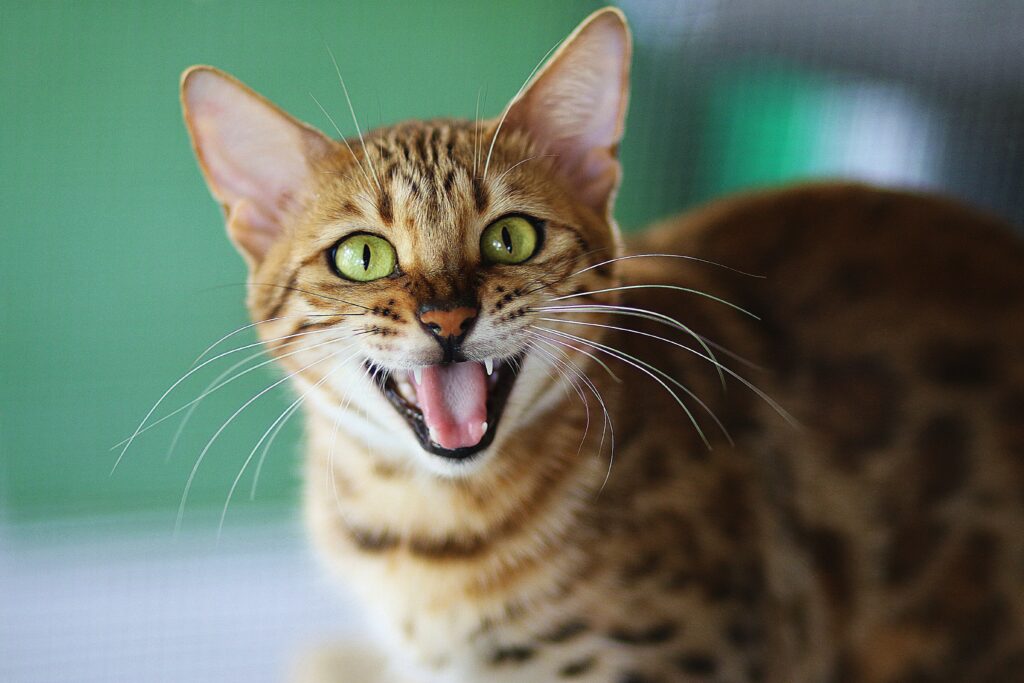Do Kitties Communicate Vocally With Their Owners?
Cats are known for their mysterious and sometimes enigmatic nature.
While they may not communicate in the same way humans do, they have a unique language all their own.
One aspect of feline communication that often fascinates cat owners is vocalization.
Do kitties communicate vocally with their owners, and if so, what are they trying to convey?
In this article, we’ll delve into the world of feline vocalizations and explore how cats use their voices to communicate with the humans they love.

The Vocal Repertoire of Cats
Varied Vocalizations
Cats have a diverse range of vocalizations, each with its unique meaning.
While meowing is the most common sound associated with cats, it’s just one piece of their vocal repertoire.
Other vocalizations include purring, hissing, growling, chirping, and even yowling.
Breed and Individual Differences
It’s important to note that breed and individual differences can influence a cat’s vocal tendencies. Some breeds, such as Siamese cats
are known for their vocal nature, while others may be more reserved in their vocalizations.
Meowing: A Means of Communication
Communicating Needs
Meowing is the primary way cats communicate with their owners. They may meow to:
- Express Hunger: Cats often meow when they’re hungry, signaling that it’s mealtime.
- Seek Attention: Cats may meow to get their owner’s attention, whether they want to play or simply be near them.
- Express Discomfort: Discomfort or pain can lead to meowing as a way to communicate distress.
- Voice Displeasure: Some cats meow to express annoyance or displeasure, such as when they’re being brushed or put into a carrier.
Meowing and Bonding
Meowing can also be a form of bonding between cats and their owners.
Cats may meow as a way to engage in a “conversation” with their humans, and many owners respond in kind.
Purring: A Sign of Contentment
Contentment and Relaxation
Purring is one of the most recognizable sounds in the feline world.
While cats often purr when they’re content and relaxed, the reasons behind purring can vary. Cats may purr when:
- Being Petted: Many cats purr when they’re being petted or stroked, indicating pleasure and comfort.
- Healing: Some experts believe that purring may have healing properties, as cats often purr when they’re injured or in pain.
- Communication: Mother cats purr to soothe and communicate with their kittens.
Other Vocalizations
Hissing, Growling, and Chirping
Hissing and growling are defensive vocalizations that cats use to express fear or aggression.
Chirping or chattering is often observed when a cat is watching birds or prey animals outside the window.
It’s believed to be a sign of frustration or excitement.
Understanding Your Cat’s Vocalizations
Context Matters
Understanding your cat’s vocalizations requires paying attention to context.
The same meow can have different meanings depending on the situation. For example, a persistent meow by the food bowl likely means hunger
while a meow at the door may signal a desire to go outside.
Building a Bond
Over time, cat owners often develop a deep understanding of their cat’s vocal cues and behaviors.
This bond allows them to respond to their cat’s needs and strengthen their connection.
Conclusion
In conclusion, kitties do communicate vocally with their owners, and their vocalizations are a unique and important part of their language.
Cats use meowing, purring, and other sounds to convey their needs, emotions, and desires.
While it may take time to fully understand your cat’s vocal cues, building a strong bond with your feline friend is a rewarding and essential part
of pet ownership.
So, the next time your cat meows or purrs in your presence, take a moment to listen and respond. You’ll be engaging in a form of communication
that deepens the connection between you and your beloved feline companion.
FAQs
- Why do some cats meow more than others?
- The frequency of meowing can vary among cats due to breed differences, individual personality, and learned behavior.
Some cats are naturally more vocal, while others are quieter.
- The frequency of meowing can vary among cats due to breed differences, individual personality, and learned behavior.
- What should I do if my cat’s meowing becomes excessive?
- Excessive meowing may be a sign of an underlying issue, such as health problems or anxiety.
Consult with a veterinarian to rule out medical causes and consider consulting with an animal behaviorist for behavioral concerns.
- Excessive meowing may be a sign of an underlying issue, such as health problems or anxiety.
- Why do cats purr when they’re in pain or injured?
- The reasons for purring in painful or injured cats are not entirely understood, but it’s believed that purring may have a self-soothing
and pain-relieving effect. It may also be a way for cats to communicate their distress to their owners.
- The reasons for purring in painful or injured cats are not entirely understood, but it’s believed that purring may have a self-soothing
- Do cats meow to communicate with each other or just with humans?
- Cats primarily meow to communicate with humans. In their interactions with other cats, body language, scent marking
and vocalizations like hissing and growling are more common forms of communication.
- Cats primarily meow to communicate with humans. In their interactions with other cats, body language, scent marking
- Can cats recognize their owner’s voice among other voices?
- Cats can often recognize their owner’s voice among other voices, especially if they have a strong bond with their owner
and are accustomed to their voice.
- Cats can often recognize their owner’s voice among other voices, especially if they have a strong bond with their owner
